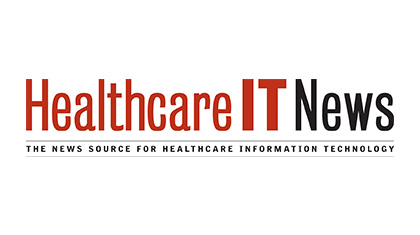
Tom Delbanco, MD, professor of general medicine and primary care at Harvard Medical School and former chief of general medicine at Beth Israel Deaconess Medical Center, is also co-director of the OpenNotes project, which gives patients access to the clinical notes written by their doctors and nurses.
OpenNotes initially launched in 2010 as a pilot program in three select locations: BIDMC, Geisinger Health System and Harborview Medical Center in Seattle. It soon became apparent that what may have seemed, at first, to be a revolutionary concept had struck a nerve.
Over the past five years, the initiative — which Delbanco first developed alongside BIDMC researcher Jan Walker, RN — has grown almost exponentially, finding footholds at some of the largest and most prestigious providers in the country, including the VA, Kaiser Permanente Northwest, Oregon Health & Science University and University of Colorado Health.
On Feb. 10, at the Healthcare IT News/HIMSS Media Patient Engagement Summit, at the Hyatt Regency in Orlando, Delbanco’s BIDMC colleague, National OpenNotes Program Director Melissa Anselmo, will talk about why OpenNotes is such a hit with patients – and, despite some initial resistance, most of the physicians who take part in it as well.
In the meantime. Delbanco describes how the project has evolved thus far, and how it plans to expand to a truly nationwide movement.
Q: OpenNotes has experienced some pretty impressive growth since that first pilot in 2010.
A: We’ve gone from 20,000 people two years ago to, we think, between 4.5 million and 5 million now, who have access to their notes via secure electronic portals.
Q: Clearly this is an idea that had legs. So how did it all get started?
A: I’ve always thought the medical record is the hub of the wheel, the way to bring patients much closer to those who care for them. I did an experiment 30 years ago where I actually had patients walking around this hospital with records they kept – and writing their own records along with the doctors writing theirs – and saying, ‘Let’s compare notes.’ We published a paper about that, the doctors thought the patients were crazy. It was a little early.
Then we got a grant (in 2010) from the Robert Wood Johnson Foundation to try this out in a big way using electronic portals. We asked doctors to volunteer in three settings. One is Beth Israel Deaconess, one of the big Harvard teaching hospitals. Another is the Geisinger Health System, which is this enormous integrated health system, serving rural Pennsylvania. And the third is Harborview, a safety net hospital in Seattle. We wanted three very different sites.
Read Mike Miliard’s article on Healthcare IT News!



